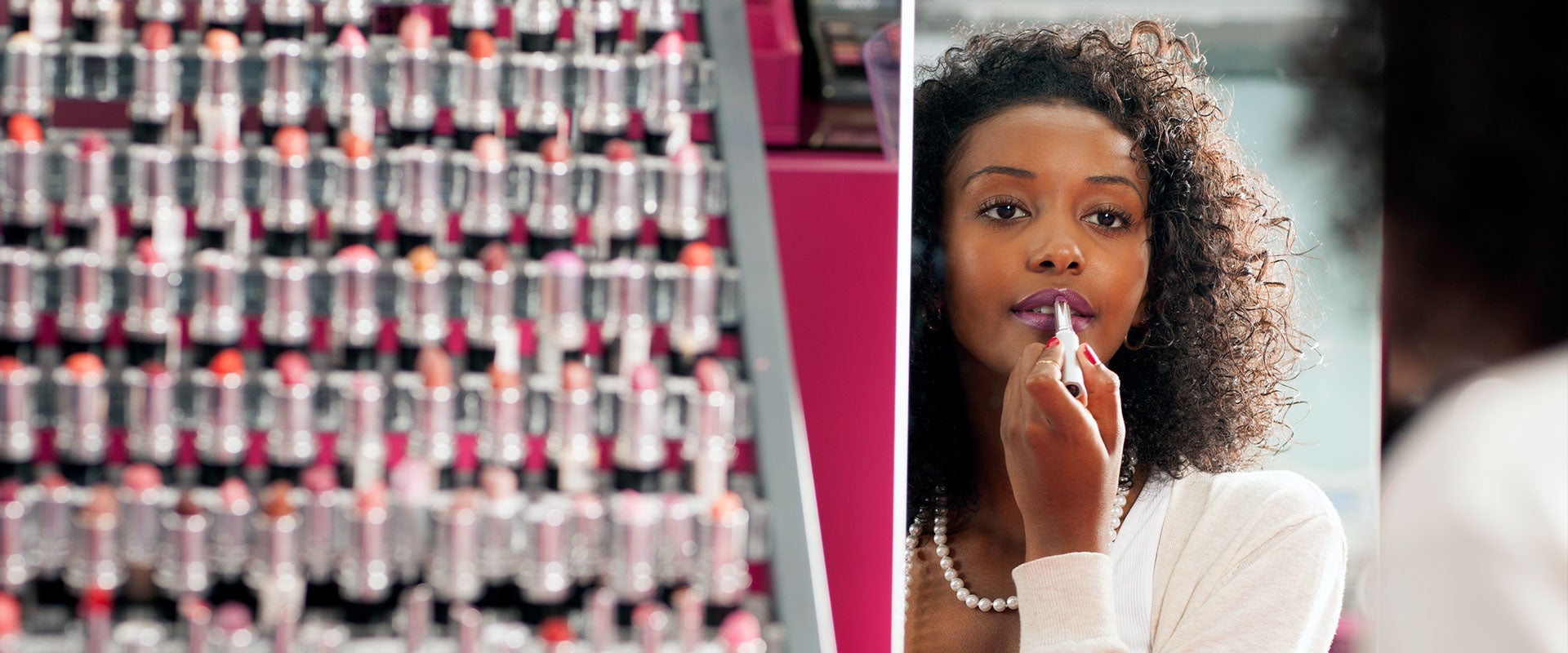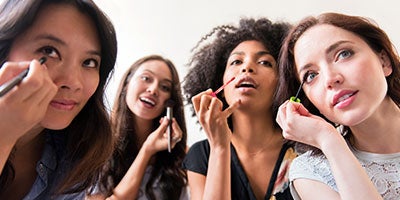These findings suggest that brands can take advantage of consumers’ “treating” and “gifting” mindset while traveling to win share of spending. Gift sets, samples and travel sizes can all be low-risk ways to drive trial and introduce a different cohort of consumers to their offerings.
Experiential retail
As consumers gradually return to airports, it is essential to capitalize on the increased traffic. Price and discounts are no longer a key buying argument (especially in an environment where discounts outside the travel retail channel have increased, narrowing the historical price gap with travel retail). One compelling promotional approach is to incorporate experiential elements into the purchasing process. Indeed, experiential retail is becoming a more common component of travel retail, and the words “experience” and “retail-tainment” are increasingly being used by travel retail executives.
As an example, DFS recently revealed that it would open a “seven-star” luxury retail and entertainment center in Hainan, China, by 2026. The center will cover more than 1.38 million square meters and feature over 1,000 luxury brands. Called DFS Yalong Bay, it is the largest project ever conceived by the travel-retail operator owned by LVMH and will also feature immersive concepts.
Omnichannel and technology
Including experiential technology within the travel retail channel can strengthen a winning omnichannel strategy. Consumers are demanding interactive, personalized experiences from travel retail outlets, and technology enables an immersive point of entry.
For example, at the end of 2022, Estée Lauder opened a new travel retail flagship at cdf Haikou International Duty-Free City in Hainan, China. The digital-forward store uses technology, including augmented reality (AR), virtual store maps and online purchase to link the in-store experience with online platforms that can introduce consumers to new products and offer personalized recommendations. Shiseido’s cdf Haikou location uses interactive screens and a giant LED column with synchronized light-changing pillars to engage shoppers with custom content and provide unique opportunities to interact with products. This pivot toward technology to engage consumers had impressive results for Shiseido Travel Retail, which saw quadruple growth in net sales from 2019 to 2023 and achieved over JPY100 billion in sales for the first time.
YSL’s beauty zone in the Barcelona airport offers visitors the chance to connect with the brand through geotargeted advertising. The location also includes interactive elements to produce a hybrid marketing experience that combines digital and physical versions of YSL, with chances for consumers to win fragrance and makeup prizes. YSL Beauty also partnered with the Hainan airport in October 2022 to launch its Scent-Station technology, which uses neuroscience to give personalized fragrance advice.
As a final example, Valentino Beauty opened a pop-up at Paris Charles de Gaulle Airport with perks such as perfume-studded bracelets and sustainable textile tote bags. Services offered include consultation via AR, ultraviolet printing personalization with unique fragrance suggestions, voice print experience to personalize a Valentino card, and a photo booth.
Influencers
Consumers who shop in travel retail can be drawn in by influencers (e.g., social media stars, actors, models) who provide a recognizable face to connect with the brand. Travel influencers were the fourth-most popular type of creator worldwide; they were followed by 11% of adults, on par with fashion and beauty influencers.
Brands that partner with these influencers for marketing initiatives can increase their perceived relevance to consumer lifestyles.
L’Oréal Travel Retail, in an effort to capitalize on the strong purchasing power of outbound Chinese tourists from the United States, created the YSL Dare to Stage pop-up event at its location in the Los Angeles International Airport (LAX). It secured influencers, social media advertisements and WeChat articles, leading to significant increases in impressions and engagement as well as traffic to its LAX duty-free shop during the event.
Strategic partnerships
A beauty brand can also develop partnerships with airlines, hotels or cruise lines to leverage travel retail channels as a marketing vehicle. For example, a brand could offer its travel-size products to business class passengers on airlines or offer discounts for full-sized products. Or a hotel chain could include front-of-house products in their spas as a way to introduce them to consumers.
For instance, L’Oréal, TripAdvisor and Dufry formed a strategic partnership. In the long-term agreement, TripAdvisor customers in the United Kingdom are redirected to a L’Oréal Duty Free “Beauty to Go” landing page where they can reserve L’Oréal bestsellers from the Dufry site, which they then pay for and collect at the airport. Capitalizing on the growth across the fragrance category, L’Oréal Travel Retail has continued to launch new innovations with strategic partners, such as leveraging its partnership with weather and air quality company BreezoMeter to offer customers accurate product recommendations when they are traveling.
Luxury hotel chains across the United States are also approaching hospitality from a different angle by partnering with beauty companies (e.g., Le Labo, C.O. Bigelow) to add in-room luxury brands and a “beauty minibar” to their offerings. Equinox Hotels created a beauty minibar called RoomBar that carries over 80 products for sleep, skin care, and wellness, including supplements, proprietary teas, tinctures, beauty treatments, snacks, beverages and workout wear.
High-quality services
Brands can also create a more elevated shopping experience by providing opportunities to try a product in a controlled, refined environment. Brands can utilize their retail space to offer services such as skin consultations, facials or massages.
For example, in its Paris, Copenhagen and Singapore airport locations, Kérastase has invested in airport beauty services. Its staff and products offer a personalized diagnosis for both hair and scalp while travelers wait for their flights. In addition, the diagnoses recommend specific products, including exclusive Kérastase travel sets. This venture has been credited with a 70% customer conversion rate.
From heritage luxury brands to niche and indie beauty labels
Growth drivers vary greatly from region to region. To take advantage of local consumer appeal, an offer needs to reflect in-demand categories and brands. For example, fragrances have always been a strong category in travel retail, but the recent worldwide growth in niche fragrances driven by Asian consumers needs to be taken into account when adapting the offer and experience. Brands like Creed, Parfums de Marly, Penhaligon’s and L’Artisan Parfumeur represent a major opportunity for travel retail: These niche brands are increasingly popular with consumers and need their own haute parfumerie space in travel retail. Setting up travel retail venues also meets a critical need for the beauty groups that own these brands: to increase the number of doors without diluting the high-end and exclusive experience.
Exclusive product assortments
Travel retail can pave the way for new growth and experiences
As travel accelerates around the world, beauty companies in travel retail have a unique opportunity to acquire new consumers while introducing new products and experiences. Beauty has a large share of travel retail already, but the channel comprises only a fraction of total global beauty sales. By investing in unique omnichannel marketing, offering high-quality services and providing consumers with products they cannot find elsewhere, beauty companies can use the travel retail channel to drive growth.
For more information, please contact strategy@lekinsights.com.
L.E.K. Consulting is a registered trademark of L.E.K. Consulting LLC. All other products and brands mentioned in this document are properties of their respective owners. © 2024 L.E.K. Consulting LLC










